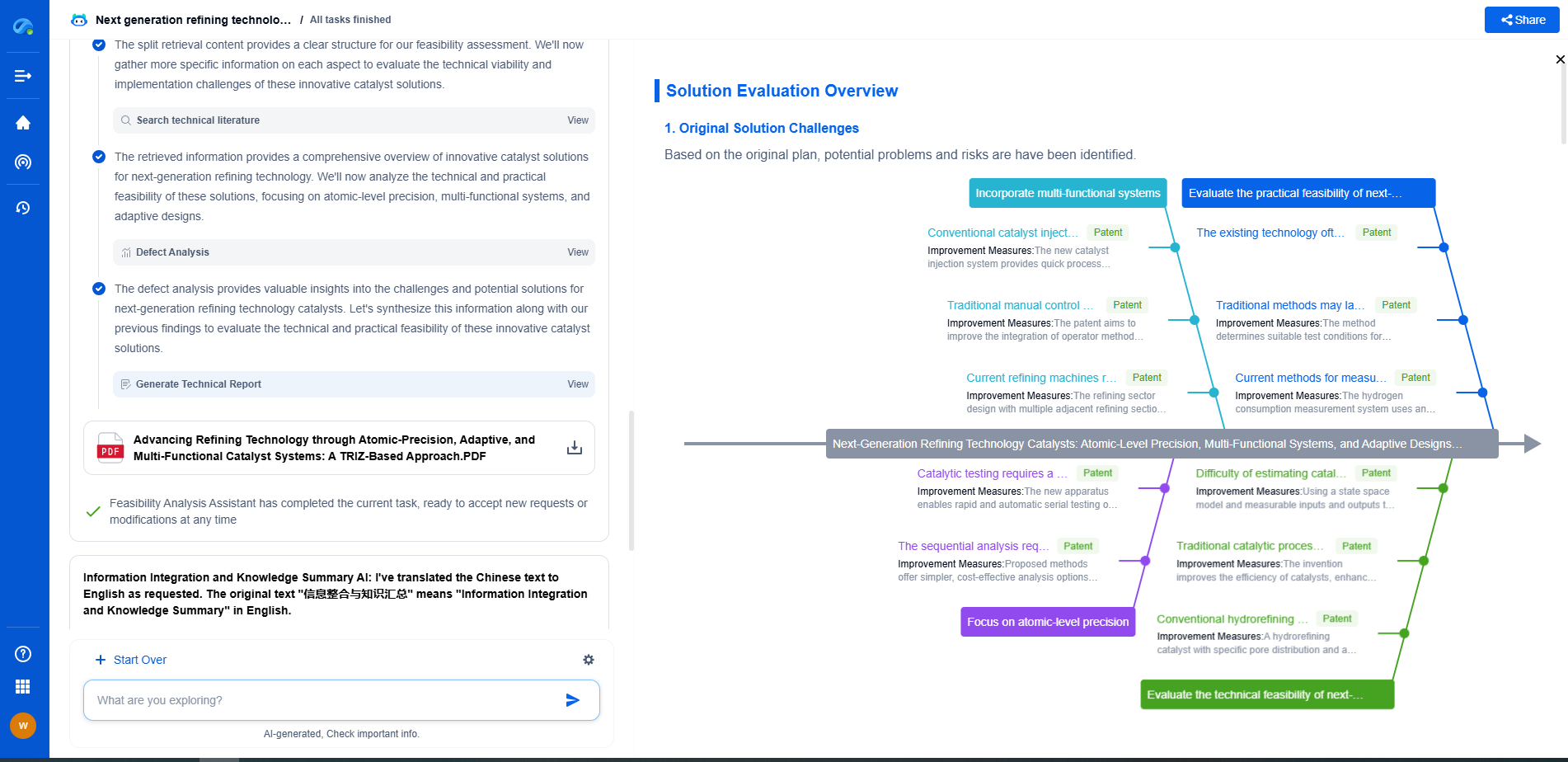Analog vs digital sensors: Which are better for robot joints?
JUN 26, 2025 |
The quest for precise and reliable feedback in robotics has always been at the forefront of technological development. Robot joints, a critical component in achieving smooth motion and functionality, rely heavily on accurate sensing mechanisms. The debate between analog and digital sensors often arises when deciding which is better suited for robot joints. Both types of sensors have their advantages and disadvantages, making the decision dependent on the specific needs of the application. This article delves into the nuances of analog and digital sensors, examining their strengths and weaknesses to help determine which might be better for robot joints.
Understanding Analog Sensors
Analog sensors operate on continuous signals. They measure a parameter and convert that measurement into a continuous signal, usually in the form of voltage or current. The main advantage of analog sensors is their simplicity and the natural way they capture data. Since they provide a continuous stream of data, they can be more sensitive to changes in the parameter they are measuring. This can be particularly advantageous in applications where fine-grained data is essential.
However, analog sensors are also prone to noise and signal degradation over long distances, making them less suitable for environments where robustness is essential. They also require additional hardware, such as analog-to-digital converters, to integrate with digital systems, potentially complicating the design and increasing costs.
Exploring Digital Sensors
Digital sensors, on the other hand, convert analog inputs into digital signals, which can be directly processed by digital systems. They are known for their accuracy and reliability, especially in noisy environments. Digital signals are less susceptible to interference and can be transmitted over longer distances without degradation, making them ideal for complex robotic systems.
Despite their advantages, digital sensors may sometimes lack the sensitivity of their analog counterparts due to quantization during the conversion process. This can result in a loss of subtle information, which might be critical in applications requiring high precision and resolution.
Comparative Analysis
When deciding between analog and digital sensors for robot joints, several factors need to be considered. Analog sensors might be preferred in scenarios where sensitivity and immediate responsiveness to changes are paramount. They excel in applications where fine-tuned control and nuanced feedback are required, such as in delicate robotic applications.
Digital sensors, however, may be better suited for environments where robustness, ease of integration with digital systems, and resistance to interference are more critical. Their ability to maintain signal integrity over long distances and compatibility with digital processing systems can provide a significant advantage in more industrial or complex robotic setups.
Cost Considerations
Cost is another important factor to consider. Analog sensors can often be less expensive initially, but the need for additional components to convert and process the data may increase overall expenses. Digital sensors, while potentially more costly upfront, might offer savings in terms of integration and maintenance, especially in digital-heavy environments.
Conclusion
There is no one-size-fits-all answer to whether analog or digital sensors are better for robot joints. Each type has its distinct benefits and drawbacks, largely influenced by the specific requirements and constraints of the application. Analog sensors may offer better sensitivity and immediate responsiveness, while digital sensors provide robustness and seamless integration with modern systems. Ultimately, the choice should be guided by the unique demands of the robot joint application, taking into account factors like sensitivity, environmental conditions, integration needs, and cost. By carefully evaluating these considerations, one can make an informed decision that maximizes the efficiency and effectiveness of robotic joints.
Ready to Redefine Your Robotics R&D Workflow?
Whether you're designing next-generation robotic arms, optimizing manipulator kinematics, or mining patent data for innovation insights, Patsnap Eureka, our cutting-edge AI assistant, is built for R&D and IP professionals in high-tech industries, is built to accelerate every step of your journey.
No more getting buried in thousands of documents or wasting time on repetitive technical analysis. Our AI Agent helps R&D and IP teams in high-tech enterprises save hundreds of hours, reduce risk of oversight, and move from concept to prototype faster than ever before.
👉 Experience how AI can revolutionize your robotics innovation cycle. Explore Patsnap Eureka today and see the difference.
- R&D
- Intellectual Property
- Life Sciences
- Materials
- Tech Scout
- Unparalleled Data Quality
- Higher Quality Content
- 60% Fewer Hallucinations
Browse by: Latest US Patents, China's latest patents, Technical Efficacy Thesaurus, Application Domain, Technology Topic, Popular Technical Reports.
© 2025 PatSnap. All rights reserved.Legal|Privacy policy|Modern Slavery Act Transparency Statement|Sitemap|About US| Contact US: help@patsnap.com

